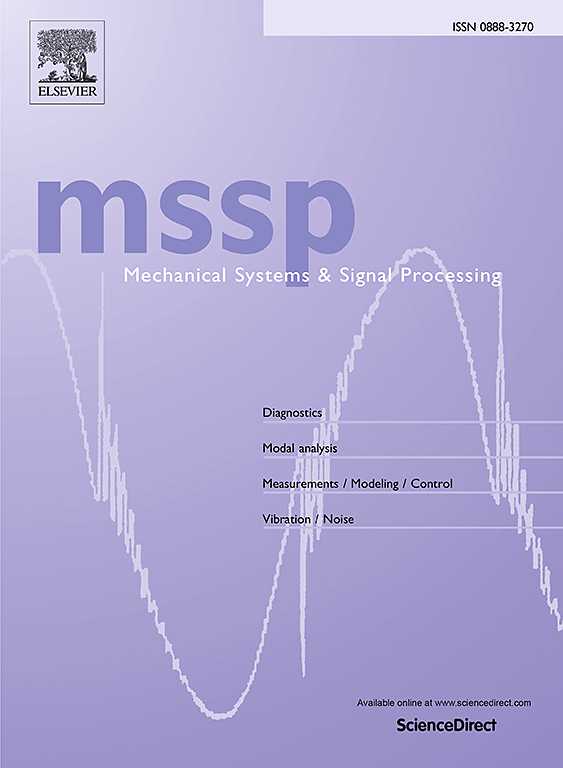A multi-order synchrosqueezing transform leveraging informative harmonics selection for instantaneous angular speed estimation
IF 7.9
1区 工程技术
Q1 ENGINEERING, MECHANICAL
引用次数: 0
Abstract
Under nonstationary conditions, estimating the instantaneous angular speed (IAS) of rotating machines from vibration measurements is a practical way for encoder-free condition monitoring. Existing IAS estimation methods typically proceed from two main approaches: phase demodulation and time–frequency representation (TFR). However, several methods from these two categories often face challenges such as a single-harmonic focus and difficulty in distinguishing between clean and noisy harmonics. Noisy harmonics are characterized by low signal-to-noise ratio, energy attenuation, and interference from other components. In contrast, clean harmonics, revolve around the actual IAS, thus improving the accuracy of its estimation. This paper introduces a novel approach, the Multi Order Synchrosqueezing Transform (MOST), which stands out due to its ability to automatically identify and utilize informative harmonics, setting it apart from traditional methodologies. MOST aims at providing a more accurate IAS estimation under nonstationary conditions. It proceeds from an initial IAS estimate from a synchrosqueezing transform and then introduces a normalized threshold aimed at preserving the energy of harmonics in the TFR at each time bin. Next, it constructs a probability density function using multiple harmonics. By doing so, it retains essential information from selected harmonics while effectively filtering out irrelevant noise. To emphasize the effectiveness of this approach, the paper conducts an exhaustive investigation. The evaluation includes rigorous performance testing across multiple noise levels to demonstrate its robustness, alongside assessments based on simulated data and two benchmark experimental datasets. This shows the impaction of MOST in its generalizability to various rotating machinery types and vibration signals, highlighting its potential for broader industrial applications.
求助全文
约1分钟内获得全文
求助全文
来源期刊

Mechanical Systems and Signal Processing
工程技术-工程:机械
CiteScore
14.80
自引率
13.10%
发文量
1183
审稿时长
5.4 months
期刊介绍:
Journal Name: Mechanical Systems and Signal Processing (MSSP)
Interdisciplinary Focus:
Mechanical, Aerospace, and Civil Engineering
Purpose:Reporting scientific advancements of the highest quality
Arising from new techniques in sensing, instrumentation, signal processing, modelling, and control of dynamic systems
 求助内容:
求助内容: 应助结果提醒方式:
应助结果提醒方式:


